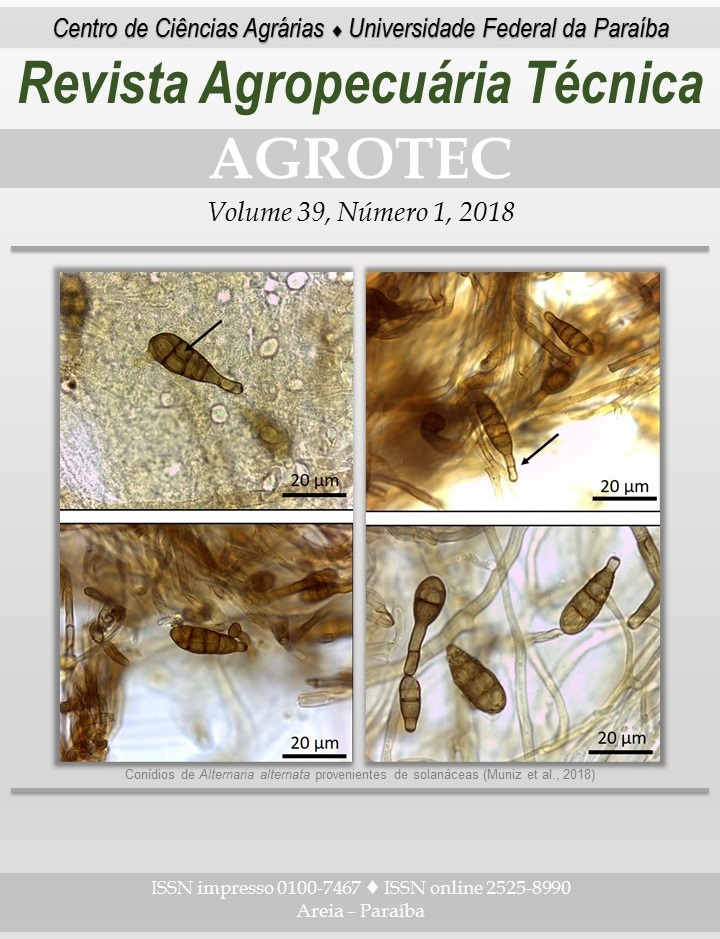Morphological characterization of Alternaria alternata (Fr.:Fr.) Keissl. occurring in solanaceae
DOI:
https://doi.org/10.25066/agrotec.v39i1.35699Keywords:
Horticulture, Mycology, Fungal taxonomy, Solanum tuberosum, Solanum lycopersicumAbstract
The black point, which causal agent is the fungus Alternariaspp., is distributed in the solanaceousplanting areas, registering considerable losses of production in several regions of the world. In this sense, the correct identification of the pathogen is the first step in the disease management, aiming to guarantee an uniform establishment of the cropsin the field. The objective of this work was to characterize Alternariasp. fungus, occurring in vegetative organs of tomato and potato. In phytosanitary inspections on rural properties in the municipality of Ipameri, Goiás, two samples of tomato leaves, one of fruit and one of potato leaves showing lesions were collected, which were examined in stereomicroscope. For micromorphological characterization, semipermanent slides mountings were made by removing mycelium and fungal structures found on infected plant tissue. The species found in the analyzed solanaceous materials showed conidia with 18.4 -54.8 x 5.8 -18.4 μm, inverted pear shape, light brown coloration and a beak of 3.2 -17.2 μm. Therefore, it is verified A. alternataoccurrence on the four samples analyzed.


